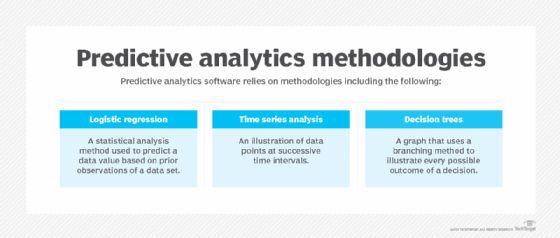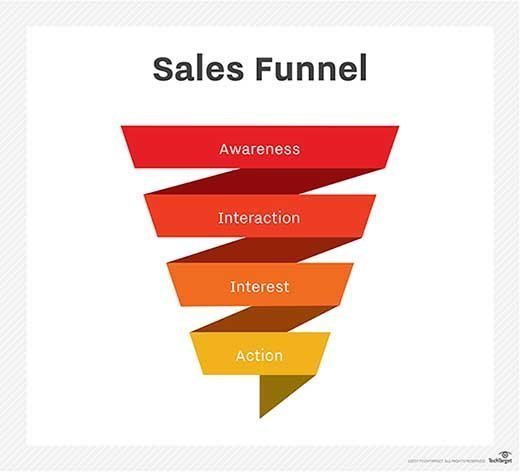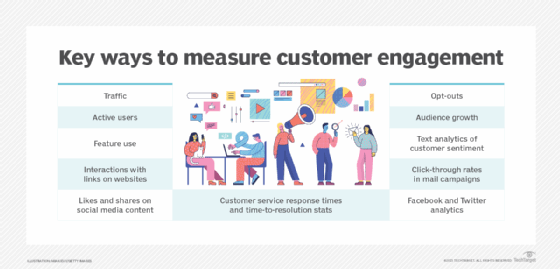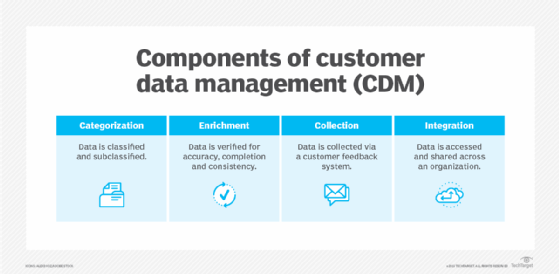purchase intent
What is purchase intent?
Purchase intent is the probability that a consumer will buy a product or service. To evaluate purchase intent, marketers use predictive modeling to help identify the possibility of future outcomes based on historical data.
The concept of purchase intent is pivotal in marketing as it helps predict future buying behaviors. Generally speaking, the modeling uses a core set of variables that includes factors like demographics, website engagement, past purchases, interaction with marketing messages, and in business-to-business (B2B) marketing, webcast or event attendance.

Evaluating purchase intent
Evaluating purchase intent involves putting together data from different sources to understand which variables have the maximum impact. The knowledge is used to drive marketing strategies and also to refine messaging across different communication and marketing channels.
Predictive modeling in assessing purchase intent utilizes historical data to forecast future buying actions. This modeling is sophisticated, often incorporating machine learning algorithms to refine predictions over time.
An important goal of assessing purchase intent is to gain insight into how effective an offline or online media campaign is and whether the money spent on marketing initiatives has an acceptable return on investment (ROI).
Intent data analysis can also reveal when a customer has a strong predisposition to buy from a particular vendor, with practical applications ranging from prospect scoring and nurturing campaigns to programmatic advertising and account-based marketing (ABM).
Used effectively, purchase intent can improve and optimize conversion rates to streamline the conversion funnel, expedite deal velocity, and create stronger synergies between marketing and sales.

Strategic applications for purchase intent
Understanding and using purchase intent is pivotal across various marketing strategies and techniques. It serves as a foundation for developing more effective marketing strategies and enhancing overall campaign effectiveness. Here's how it integrates into modern marketing practices.
Enhancing marketing strategy
The analysis of purchase intent is instrumental in crafting refined marketing strategies. It allows marketers to tailor communications effectively across various channels, ensuring that messages are both relevant and timely.
This strategic application of purchase intent is essential for aligning marketing messages with the specific interests and needs of target audiences, thereby increasing the relevance of the content and improving customer engagement.
Evaluating campaign effectiveness
Regular analysis of purchase intent also aids in measuring the effectiveness of both online and offline marketing campaigns. This analysis provides vital insights into the ROI and helps marketers adjust strategies to maximize effectiveness.
By understanding which aspects of a campaign resonate with potential buyers, marketers can make informed decisions to optimize their spending and campaign tactics to better meet their goals.
Advanced intent data analysis
Intent data analysis is a more advanced use of purchase intent, revealing customers' likelihood to purchase from specific vendors. This form of analysis is invaluable for scoring prospects and nurturing leads through targeted advertising and communications.
It forms the cornerstone of ABM strategies, enhancing targeting precision in both programmatic advertising and personalized marketing efforts.
Boosting customer engagement
Furthermore, by leveraging insights into purchase intent, companies can deliver highly personalized experiences to customers. This approach not only improves engagement by making interactions more relevant and appealing but also boosts conversion rates and accelerates the overall sales process.
Personalization based on purchase intent ensures that marketing efforts are more effectively aligned with consumer behavior and preferences, resulting in better customer experiences and increased loyalty.
Incorporating purchase intent into marketing strategies offers a comprehensive way to enhance customer understanding, tailor marketing efforts, and ultimately drive business success.

Challenges in purchase intent analysis
To effectively use purchase intent data, marketers face several key challenges that impact both the accuracy of their insights and their compliance with evolving privacy laws. Let's explore these challenges in more detail:
Data quality and integration
Ensuring the quality and integration of intent data from multiple sources remains a significant challenge in purchase intent analysis. High-quality data is critical for accurately targeting and engaging potential buyers, yet it is often difficult to achieve due to inconsistencies across different data types and sources.
For example, data collected from online behavior may not align seamlessly with data from offline interactions, leading to potential discrepancies in customer profiles. Marketers must employ rigorous data management practices, including regular audits and validations, to maintain data accuracy.
In addition, integrating this data into a unified system that provides a holistic view of customer behaviors and preferences is essential but complex. It requires sophisticated data integration tools and expertise in data science to ensure all data points are harmonized through proper preparation and actionable.

Balancing personalization in and privacy
As marketers increasingly rely on detailed insight into customer purchase intent data to tailor customer experiences, the challenge of balancing personalization with privacy becomes more pronounced. Consumers today are more aware of their digital footprints and are concerned about how their information is used.
This awareness has led to stricter data protection regulations globally, such as the General Data Protection Regulation (GDPR) in Europe and the California Consumer Privacy Act (CCPA) in the United States. Marketers must navigate these regulations carefully to maintain consumer trust while still leveraging data for personalized marketing.
This involves transparent data collection practices, securing consumer consent, and providing clear options for consumers to control their data. Ensuring that personalization strategies respect privacy limits is not just about compliance; it is also about building lasting relationships with customers based on trust and respect.
Check out the top customer data privacy best practices and how data anonymization best practices protect sensitive data. See how to get value from customer insights data and explore four customer insights research techniques for your organization. Master the top 10 customer success key performance indicators and metrics you should be tracking.
